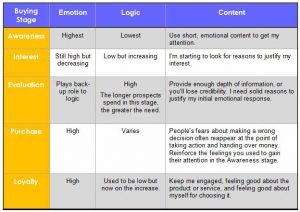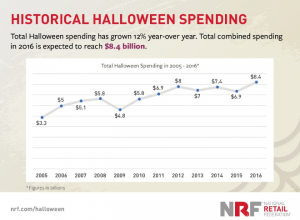Mapping your brand goal to behaviors and emotions is key to building a successful strategy.
In this two-part feature, Jade Bunke offers a step-by-step guide to building a successful brand.
A brand is an organization’s most valuable asset. The art of capturing the hearts and minds of your customers starts with crafting a brand strategy that evokes emotions and behaviors that benefit your company.
Brand is more than a collection of logos and colors — it’s the personification of your organization. When done correctly, it represents an intricately woven tapestry of interconnected touchpoints that move people emotionally and intentionally. As you start the New Year, it’s time to consider a new approach to brand building. Are you ready to create your own masterpiece?
Building a brand to change minds and behaviors
Building a brand with the potency to change minds requires forethought. To provide you with a framework to influence thoughts and behaviors in the future, here’s a step-by-step framework to help you build a modern brand strategy.
1. Establish a primary goal
The first step is obvious but no less essential to building a successful brand strategy: Define a clear goal that will guide your efforts.
Do you want to be the market leader in your category? Is your goal to achieve a certain revenue target? Regardless of your goal, you must drop it like an anchor to keep your strategy from drifting into unknown waters.
2. Identify supporting objectives
Next, identify supporting objectives that help you get closer to achieving your goal. If you’re goal is to capture the largest market share for your product, for example, you need to identify objectives that help establish your company as the industry leader. What do you need people to do to help you achieve your goal?
As part of this process, asking yourself a series of questions is beneficial. Examples of the types of questions you might want to ask include:
- Do you need to increase sales by a specific number?
- “We need to generate $ 12 million in new revenue to become the market leader.”
- Do you want customers to develop an emotional connection to your brand?
- “We want our customers to feel happy when thinking about our brand”
- Are you looking to create high social engagement with a niche population?
- “We want our key customer base repost and share our content daily.”
- Are you looking to increase certain KPIs?
- “We need to increase web quotes by 20% to meet revenue targets.”
The number of objectives isn’t crucial; they just need to work together to move you closer to your goal. The supporting objectives are also crucial for helping you make decisions relative to your marketing activity.
Consider the following scenario: You’re contemplating a new social media campaign to help you get closer to your revenue target. It’s a controversial campaign idea that will drive sales among one segment of your audience but anger a different segment. If one of your objectives is to create a happy sentiment toward your brand, you know immediately that your controversial campaign idea doesn’t align with your strategy. Immediately, you can move to the next idea that creates the emotional response you want from your entire customer base.
The supporting objectives serve as guiding principles for your marketing activity, like maritime beacons that safely guide a sea vessel to its final destination.
3. Creating brand mission and vision
Now that you know what you want to accomplish, you can crystalize your brand mission and vision into statements you can share with the public. Your brand mission represents what you’re attempting to accomplish right now. If you’re primary goal is to generate a certain dollar amount, you must translate it into a mission that your customers can support.
Often, though not always, you want to avoid putting a financial reference in your mission statement. Instead, use it to connect what you do with what’s important for your customers. In other words, why should customers support your cause? What’s important to them?
- Tesla’s mission is “to accelerate the world’s transition to sustainable energy.”
- Meta is focused on “giving people the power to build community and bring the world closer together.”
These missions align with each company’s core offerings — and they’re both more inspirational than financial goals.
As you create your mission statement, you also want to think about tomorrow. Where is your brand going?
- Tesla’s vision is “to create the most compelling car company of the 21st century by driving the world’s transition to electric vehicles.”
- Amazon’s vision “is to be earth’s most customer-centric company, where customers can find and discover anything they might want to buy online.”
As you can see from the examples above, the mission and vision statements fit perfectly with each brand — and that starts with brand values.
4. Understanding values and attributes
A brand is often built on a set of values and attributes that further define the brand personality. The values are typically already part of the company culture. Are your organization’s values embedded into your brand story?
Values are often grounded within an ethical framework and can give your brand character. For what does your company stand? As you integrate your organization’s values into the fabric of your brand personality, work to create a unique and authentic quilt that captures the essence of your organization.
When developing your strategy, think about brand associations. When customers see your marketing assets, what impression do you want them to have? What do they think when they see your logo? What about the design of your trade show booth?
Perceptions influence behavior. And when you’re building a brand strategy, you’re ultimately trying to elicit behaviors.
By creating brand attributes, you can shape perceptions on your terms. As part of this process, it’s helpful to identify words you want your customers to associate with your brand. What makes your brand distinctive and memorable? How can you use these words to tell a story that influences perception and sentiment to make it easier to connect with your audience?
In part 2 of this article, learn about triggering the right customer behaviors, the differences between emotions and feelings and how to future-proof your brand strategy.
The post Top tips for building a successful brand strategy in 2024 and beyond appeared first on MarTech.
MarTech(21)
Report Post





